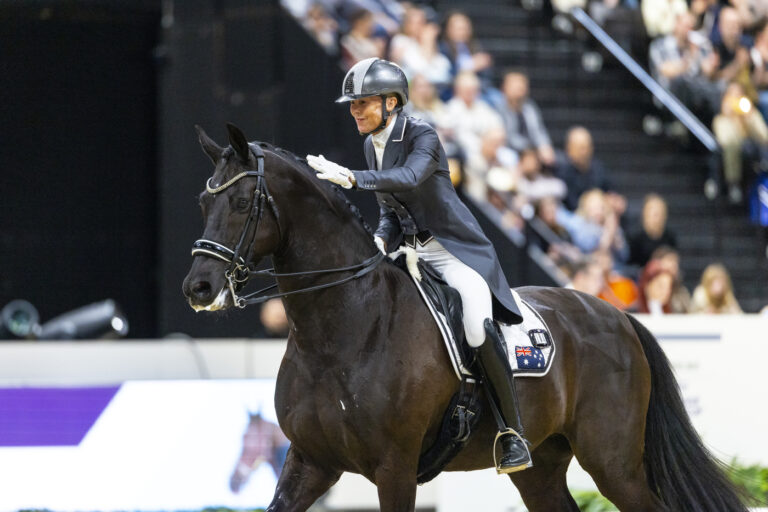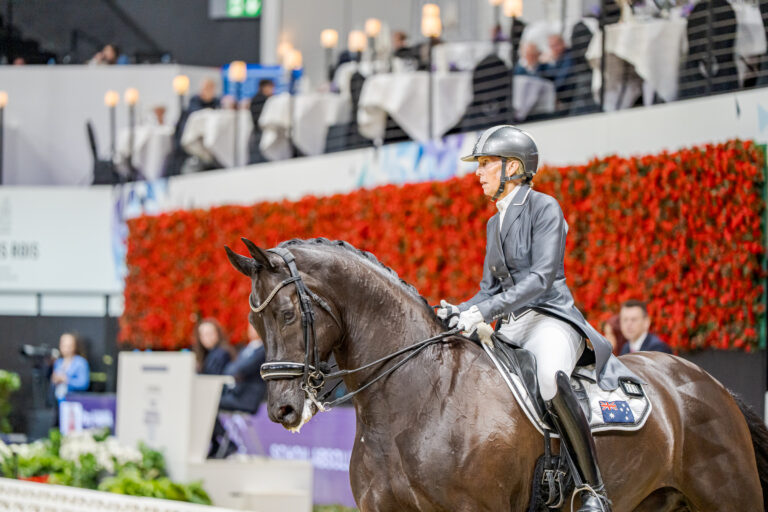This article first appeared in a previous issue of Equestrian Life. To see what’s in the current issue click here.
© Franz Venhaus
By Dr Kerry Mack
One of the really hard things to cope with in our sport is the situation when the judges disagree about your test. It may be that the scores are very different, or it may be that the judges disagree about the placing in the class. Of course the reason we have more than one judge is in recognition that the judges won’t agree absolutely. When you get to the most important classes, even with the most experienced judges, we have 5 judges so that the differences between the judges are averaged out. At an international level there has even been discussion about the possibility that the highest and lowest scores should be discarded, to encourage judges to be moderate. This also discourages the alleged practise of judges giving riders from their own country higher scores.
So we must accept that it is normal to have some variance in the scores. The variance can be partly explained by the position the judges are sitting. For example the judge at C will see the straightness of the entry and the judge at E will see the accuracy and the squareness. Some of the variance will come from differences in emphasis, for example one judge may penalise a change in rhythm (first thing on the training scale) more than an accuracy problem and another may have a different view. I commend to all riders to try judging, even as an exercise from the sidelines and see how you go deciding on a score for each movement in real time. This horse does a square halt, not quite at x, but pulls the reins out of the riders hands a bit, the next one isn’t as square but is submissive, do you give the same mark, but already the next mark has started so you must decide. Not as easy as you think.
A discrepancy between the marks of 5% or less in the FEI level tests is seen as acceptable. For EA tests it is 8%. Where there is a discrepancy of greater than this judges are required to compare notes at the end of the class to talk about the differences. For placings, a discrepancy of more than 10 places is unacceptable if the class has over 15 competitors.
Riders are encouraged to talk to judges at the competition if they are uncertain of how a judge decided on a mark. You should preferably take your test sheets to the office, politely ask to talk to the judges and politely ask them to help you understand what went wrong and how you can improve. Don’t approach a judge when you are angry. Wait until you are in control of your feelings. Be polite and respectful. Listen to the explanation. Go with a genuine attitude of wanting to know the answer. At Orange CDI I was dismayed by one of the five star judges scores. I asked her reasons for the low scores. She was very helpful explaining what she saw from her vantage spot. I understood the problem and went home and fixed it. Her observations were very illuminating. Of course as riders we usually expect that the low scoring judge is the one in error. I doubt if any of us complain that the high scoring judge could have got it wrong but this is in fact just as likely as the other way around.
If you have video of the test take it with you and show the judge. I really suggest you try to video all your tests. It’s really helpful to see what you need to address. If the judge has previously given advice and you thought you had addressed it, it can really help to have video the next time, and video can be shown to your coach or another judge for advice.
If you are not satisfied with the answer, or if the difference between the marks or the placings are too great, the process is to let the chair of the judges panel know and ask for them to investigate. Certainly where the judges have broad disagreement through out the class I suggest you do this. In Victoria we have the DJEP. You can send a copy of the test sheets and results to your state EA (eg EV) office. Send a polite covering letter asking them to help with your confusion over the scoring. If a particular judge is making consistent mistakes these committees can only try to fix it if they know. You should alert them to serious errors. You can also send any complaint to the state dressage committee as well, for their information. Any correspondence to these committees should be tabled, so inaction will be noticed. If you are concerned it won’t be tabled at the meeting correctly send it to your dressage club as well.
Remediation of these problems is likely to involve education and mentoring of judges where necessary. The whole process aims to solve any misunderstanding. It is not a disciplinary process. It is to improve the judging and assist the sport.
In my experience judges welcome the opportunity to talk to riders about tests. If you are polite and reasonable, and a judge does not respond with politeness and reasonableness you can also report this conduct to the judges panel in your state. Unprofessional conduct by a judge can even be a disciplinary matter.
You should never use social media to make disparaging or offensive comments about a judge (or any person). Judges are just people who love dressage, like riders. Like riders they mostly want to learn and improve and assist the sport. Our sport needs judges and we need to value them. If the judges don’t turn up we can’t compete. Do not demonise a judge who makes a mistake, remember that the only person who never makes a mistake never made anything.
In summary:
What to do: After the test ask the judge for feedback, take your tests, video, and a good frame of mind. Do listen. If the response doesn’t satisfy you then you could send the test sheets to the state judges committee (care of your state office) and ask for their help. Don’t be abusive, don’t say inappropriate things on social media, better to deal with it directly with those who can help you – the Judges themselves or the DJE.
My thanks to Mary Seefried and Virginia Creed in preparing this document.
READ THE LATEST NEWS ARTICLES HERE







